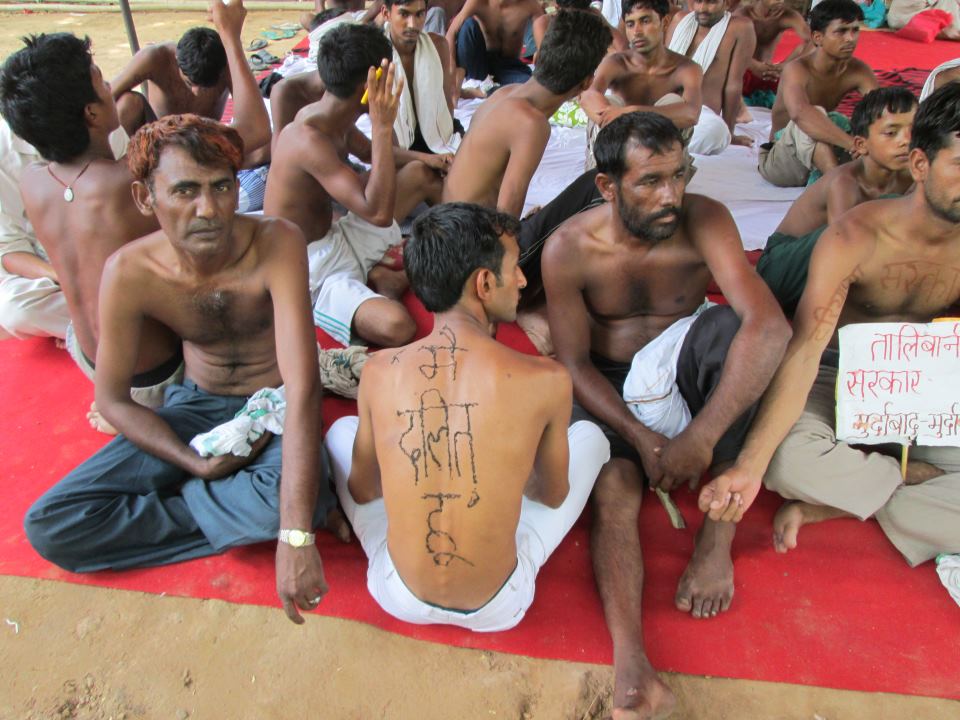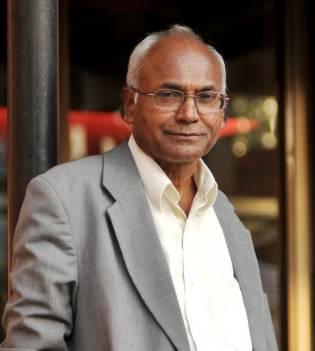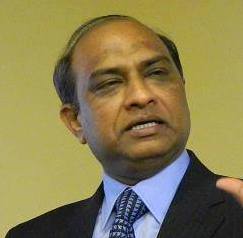Gail Omvedt
[An excerpt from the chapter Navayana Buddhism and the Modern Age from her book Buddhism in India: Challenging Brahmanism and Caste]
Apart from Gandhi, another strongly seductive opponent to the fascination for Buddhism emerged in the 1930s. This was Marxism, which was increasingly gathering strength as an ideology among the younger and militant section of the nationalist elite. It offered militancy and a mass force—the organised, factory-based working class—to fight imperialism.
Marxism, as a philosophy, identified an ‘essence’ of humanity which was as derived from the social relations of production. This was its ‘materialism’; and because these relations were seen as inherently contradictory, generating class struggle that would eventually lead to the overthrow of the ruling class and the relations of exploitation that were inherent in the system, it was ‘dialectical’. There was little room for individual choice in this system of thinking, and little room for religion or spiritualism. The idea of controlling the passions, the value of compassion, could all be characterised as bourgeois illusions. Religion was simply looked upon as alienation, as a projection of human exploitation onto an imagined world of gods. It was causally irrelevant; not a solution to human exploitation and sorrow nor even a cause of it, but simply a reflection. In Marx’s early ‘Theses on Feuerbach’ he responded to the critique of religion being made by radical Young Hegelians:
Feuerbach starts out from the fact of religious self-alienation, the duplication of the world into a religious, imaginary world and a real one. His work consists in the dissolution of the religious world into its secular basis. He overlooks the fact that after completing this work, the chief thing still remains to be done. For the fact that the secular foundation detaches itself from itself and establishes itself in the clouds as an independent realm is really to be explained only by the self-cleavage and self contradictoriness of this secular basis. The latter must itself, therefore, first be understood in its contradiction and then, by the removal of the contradiction, revolutionized in practice. Thus, for instance, once the earthly family is discovered to be the secret of the holy family, the former must then itself be criticised in theory and revolutionised in practice.
From this perspective, Marxism was fundamentally uninterested in religion, in the critique of religion or in changes of religion. A change of religion would do no good and even the critique of religion should follow social praxis.
It might be said that marxism’s basic difference with Buddhism, at least with classical Buddhism, was not so much in the critique of ‘God’ as in the view about humans in society. Marx looked at human nature as a collective product, and at human action as exerted collectively. The individual will and individual action had little relevance. In modern sociological terms, ‘structure’ implied ‘agency’; action was determined. The Buddha had also rejected the efficacy of speculation about god or the cosmos. But his attention was directed towards the psychological nature of individual action; and instituting changes in society was not so important as changes in the individual; from that social changes would flow. In that sense, early Buddhism was a radically individualistic doctrine, though it stressed a social ethic and the role of a social organisation, the Sangha, in providing a framework for search.
Marxism did have a potential for incorporating culture, ideology and individual action in a dialectical relationship with social-material relations of production in an overall therapy. However, it was propagated in a collectivist and economist version that proved a handy ideology for the Indian brahmanical elite. It systematically downplayed non-economic factors such as gender and caste, arguing that these would be nearly automatically taken care of with social- ist revolution. Young Communists were called upon to ‘declass’ themselves and they themselves became atheists—but there was no strong pressure, even as much as with early social reformers, to try to make much effective change in the religious ideologies of their families. One religion was as alienating as another; a choice of a different religion was not necessary—what was necessary was an attack on property relations, on capitalists as the main enemy. The viewing of ‘Brahmanism’ as a major enemy could be analysed and dismissed as simply another petty-bourgeois illusion.
When the ‘class against class’ thesis was rejected after 1935, the Communists in India gave their support to the national movement. This they identified with the National Congress, and they fought to bring the working class movement into the Congress Socialist Party which they tried to treat as their ‘front’ within the Congress (though a split between Communists and Socialists took place fairly quickly). This meant drawing all the activists, including those Dalits and non Brahmans whom they could influence, out of movements led by Ambedkar, Periyar and other social radicals. As the Political Thesis of the 2nd Congress in 1948 put it, the untouchables had to be drawn into the ‘democratic front’ and this meant an attack on their leadership:
This task will have to be carried out by a relentless struggle against the bourgeoisie of the upper castes as well as against the opportunist and separatist leaders of the untouchables themselves. We have to expose these leaders, tear away the untouchable masses from their influence, and convince them that their interest lies in joining hands with the other exploited sections… (Communist Party of India, 1976: 112).
Ambedkar was specifically named as a ‘reformist and separatist leader’. The document described untouchables as forming ‘the most exploited and oppressed sections of our people’ but made no specific analysis of caste. The same language could have been applied to Blacks, or to any other non-class oppressed section. Brahmanism, and its support by a particular religion, was not at all at issue. Nothing was said about the question of representation in public services and education, which Dalits and non Brahmans had sought to achieve through reservation. The Left simply ignored reservation, taking it as another ‘petty-bourgeois’ demand.
Yet it was not a simple question of antagonism between Ambedkar and the Communists and socialists. Ambedkar and the Dalit movement were very much a part of the struggles of the radical 1930s. He and his companions were leading anti-landlord struggles in the Konkan and fights of textile workers in Bombay— in both cases uniting with caste Hindus, in both cases sharing plat- forms with the Communists. In 1936 when he founded his first political party, he called it the Independent Labour Party, signifying a basic allegiance to the working class movement.
As for Marxism itself, Ambedkar was both attracted and alienated by it. According to his weekly Janata, during the 1930s he had announced at a rally that,
I have definitely read studiously more books on the Communist philosophy than all the Communist leaders here. However beautiful the Communist philosophy is in those books, still it has to be seen how useful it can be made in practice…if work is done from that perspective, I feel that the labour and length of time needed to win success in Russia will not be so much in India. And so, in regard to the toilers’ class struggle, I feel the Communist philosophy to be closer to us (Janata, 15 January, 1938).
The power of Marxist economic analysis, the tumult of the rising class movements of the 1930s, the evidence of depression and crisis in capitalist countries, and the apparent developmental achievements of the Soviet Union all exercised a powerful attraction for Ambedkar, as it did for all other movements of the time. This lasted through much of the 1940s, with Ambedkar calling for nationalisation of land and basic industries, and describing himself as a ‘state socialist’.
Nevertheless, he had major differences, and these centered around the priority of the economic sector. The general effect of Marxism on social movements of Dalits and non-Brahmans was to pull them away from supposedly ‘religious’ solutions. This was clearly happening in south India, as Iyothee Thass’ ‘Sakya Buddhism’ died away and the Tamil non-Brahman movement began to centre on political solutions. Ambedkar resisted this trend, and did so with reference to the primary thesis of Marxism, the priority of the ‘relations of production’. In a September 27, 1929 editorial in Bahishkrut Bharat entitled ‘First the Pinnacle, then the Base’, he wrote that ‘if Lenin had been born in India, he would have first annihilated casteism and untouchability and without that he would not have brought forward the idea of revolution’. This ‘base-superstructure’ imagery was turned upside down in a major editorial in Janata:
The base is not the building. On the basis of the economic relations a building is erected of religious, social and political institutions. This building has just as much reality as the base. If we want to change the base, then first the building that has been constructed on it has to be knocked down…if we want to change the economic relations of society, then first the existing social, political and other institutions will have to be destroyed (Janata, 25 June, 1938).
Ambedkar eventually moved away from the economics of Marxism also, calling himself a ‘social democrat’ rather than a ‘state socialist’ at the time of presenting the Indian Constitution. As he developed his understanding of Buddhism, he increasingly stressed it as an all-around alternative to Marxism, capable of solving the problems of conflict and suffering as Marxism could not. In ‘The Buddha and Karl Marx’, a final essay on the issue, he summed up his assessment by arguing that many of Marx’s theses had been disproved, including the economic interpretation of history, the inevitability of revolution, and the pauperisation of the proletariat. The ‘residue of fire’ that remained, he argued, consisted of concern for ‘reconstructing the world’, the conflict of interest between classes, and the necessity for the abolition of private property which was a major cause of sorrow or suffering. But, he argued, this could be most effectively done by non-violent means through the Buddhist Sangha, though he did not see it necessary for the state to renounce violence. He quoted the Cakkavati sutta to argue that the Buddhist goal was, in essence, a welfare state, with a major aim of providing wealth to the destitute. To him, Buddhism and Marxism were similar in valuing material prosperity as good, but differed regarding the path to equality and social justice; with Buddhism, this happened by changing the minds of men through the Dhamma. And he concluded with a reference to the three basic values of the French revolution, the basic thrust of modernity:
Society has been aiming to lay a new foundation as was summarized by the French Revolution in three words, fraternity, liberty and equality. The French Revolution…failed to produce equality. We welcome the Russian Revolution because it aims to produce equality. But it cannot be too much emphasized that in producing equality society cannot afford to sacrifice fraternity or liberty. It seems that these three can coexist only if one follows the way of the Buddha (Ambedkar, 1987: 462).
~~~~~~~~~~~~~~
You will find the Scribd version of the book, Buddhism in India: Challenging Brahmanism and Caste, here. Other books referred to in this excerpt are:
Communist Party of India, 1976: ‘Political Thesis (adopted at the second congress, 28 February to 6 March 1958)’ in M.B. Rao, ed., Documents of the History of the Communist Party of India, New Delhi: Peoples Publishing House.
Ambedkar, 1987: Dr. Babasaheb Ambedkar Writings and Speeches, Volume 3, compiled by Vasant Moon, Bombay: Government of Maharashtra










